2015
Observing Self
Solo show
Galerie Mark Müller
Galerie Mark Müller
29/8/15 – 17/10/15
Zürich
Zürich

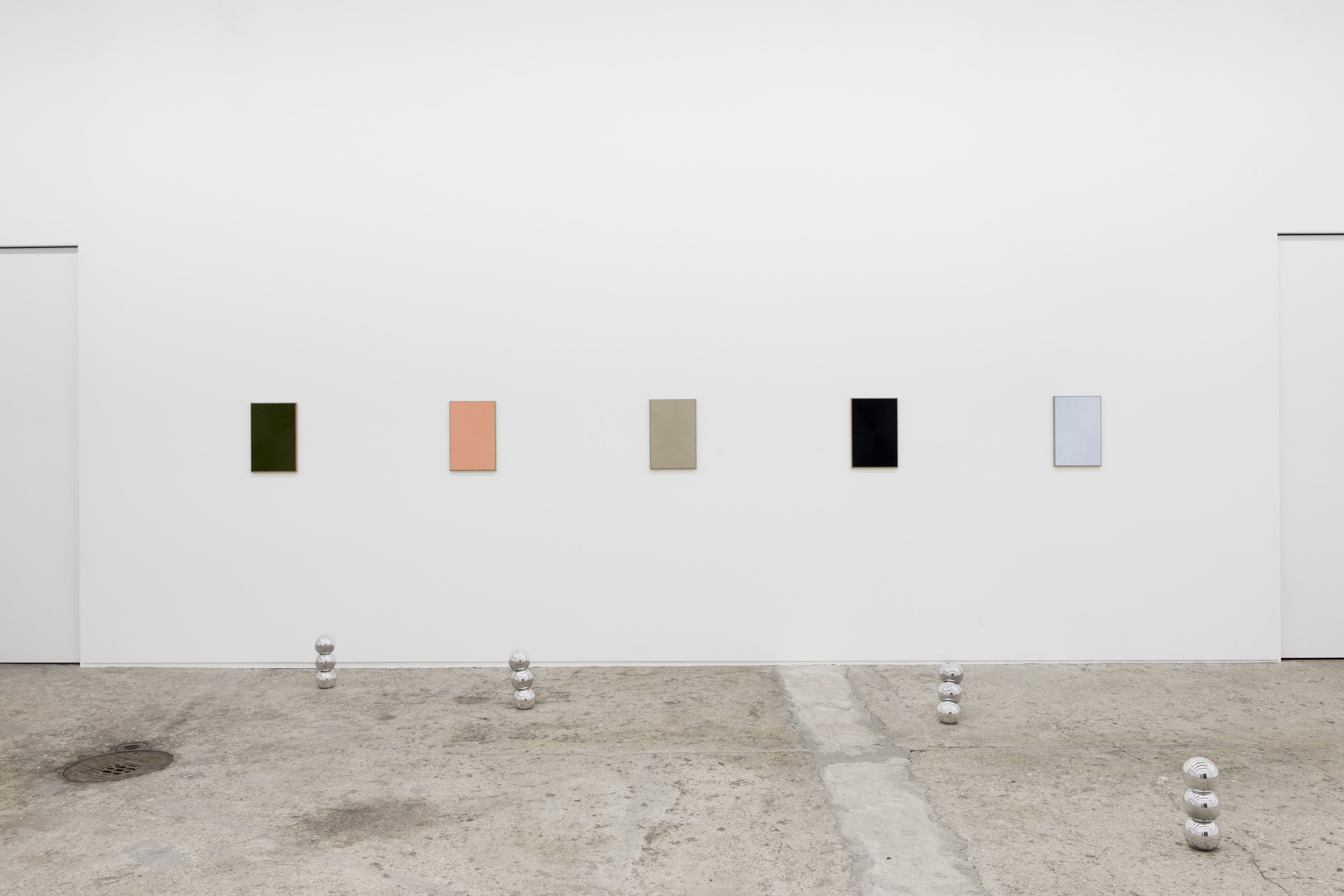

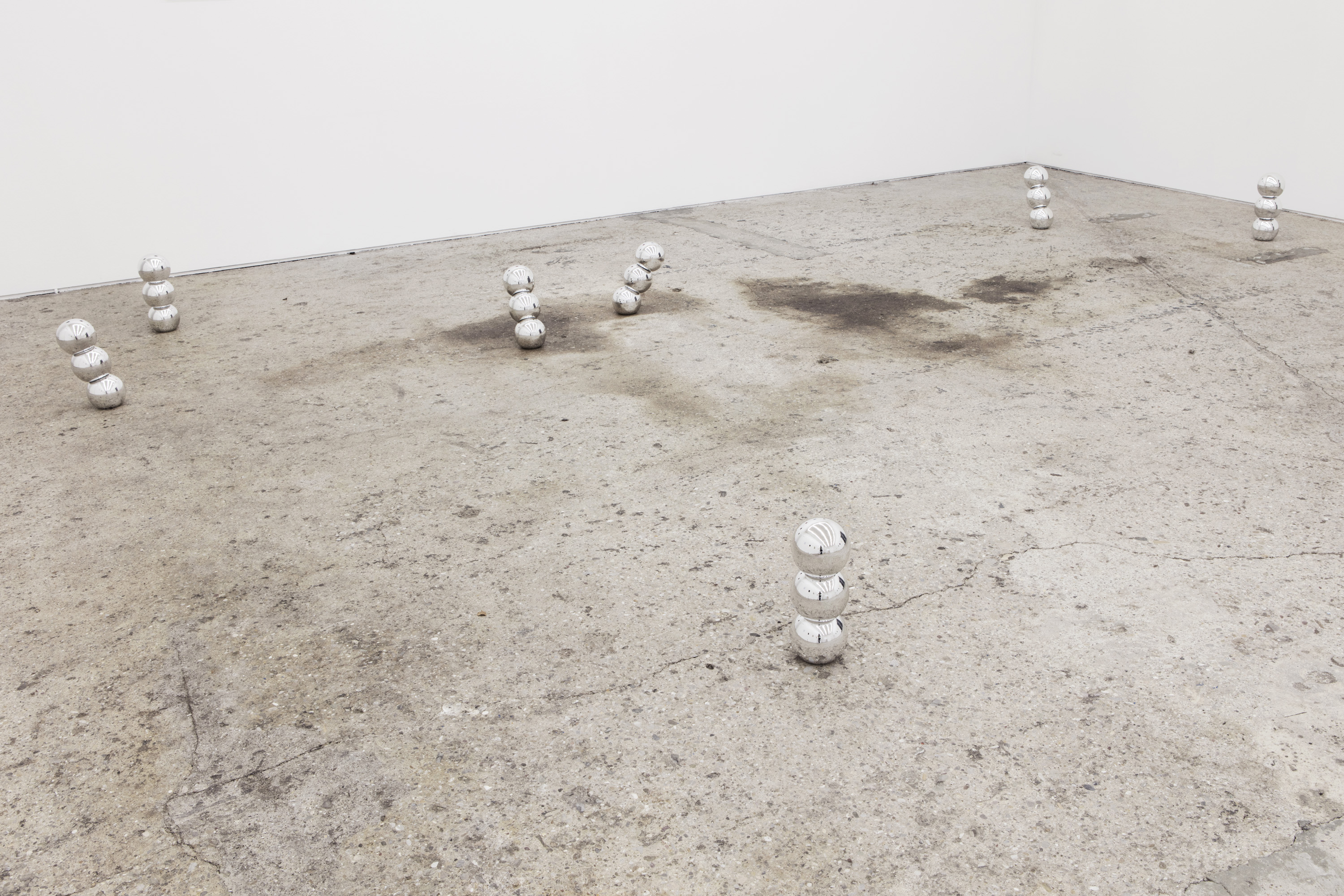
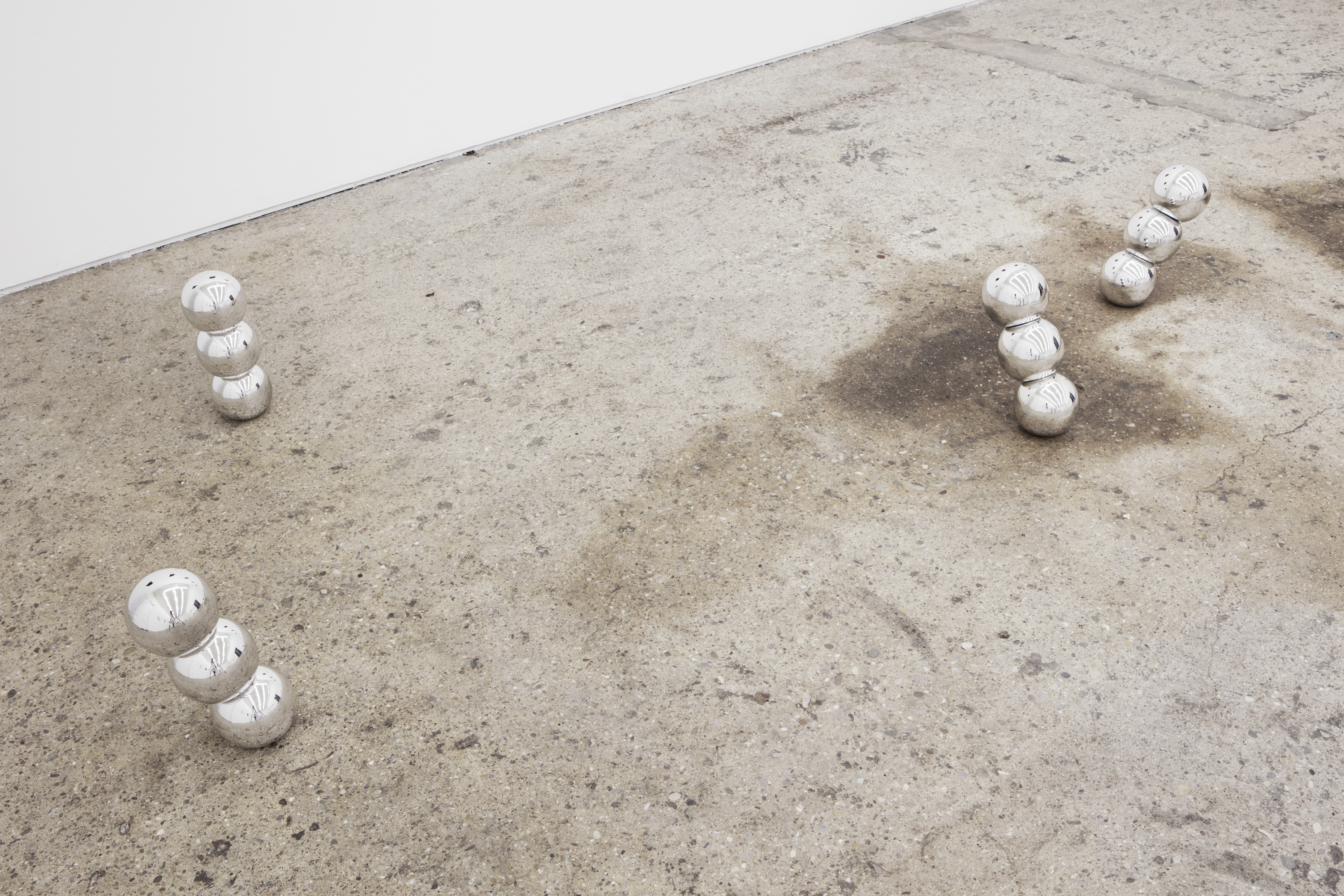
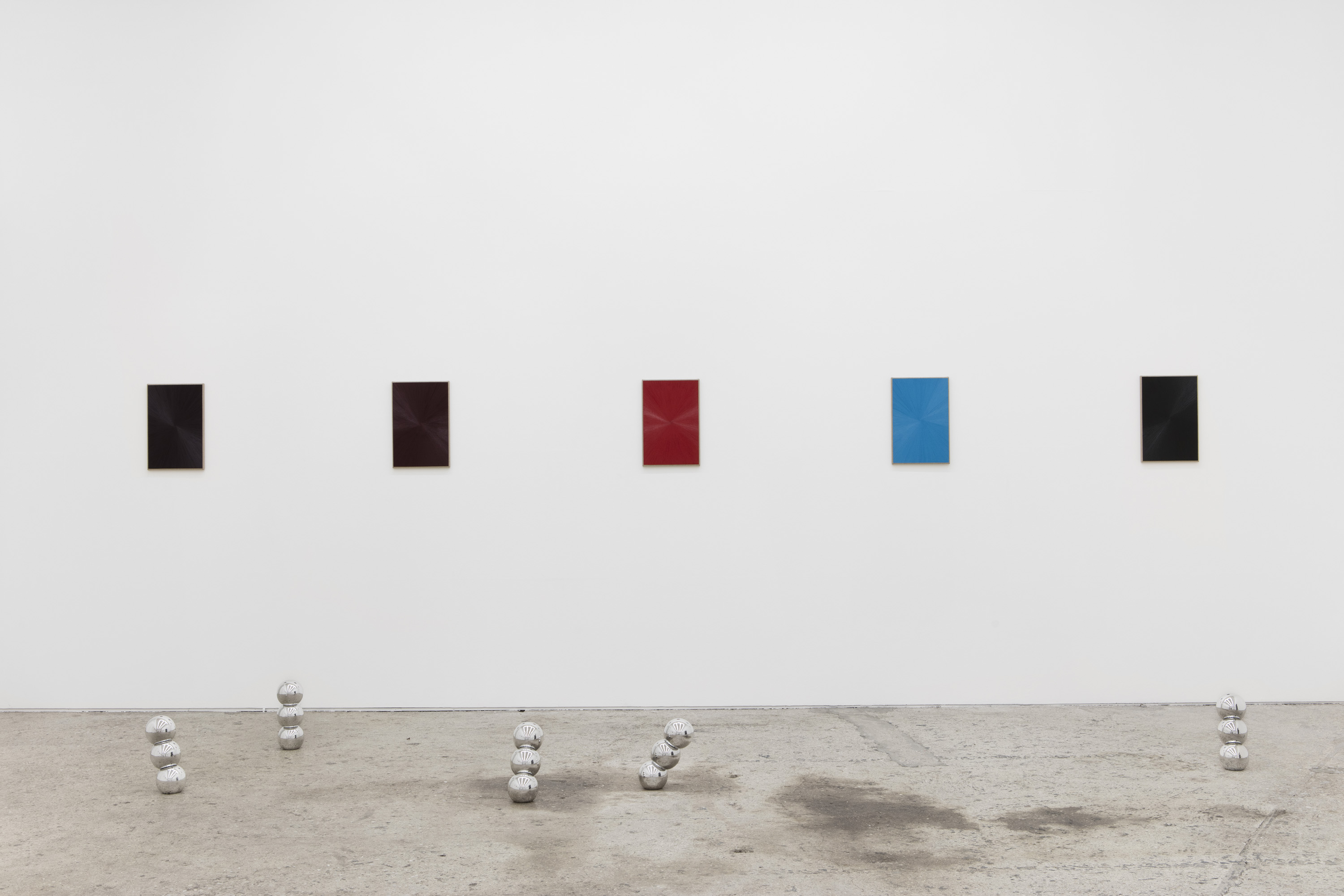

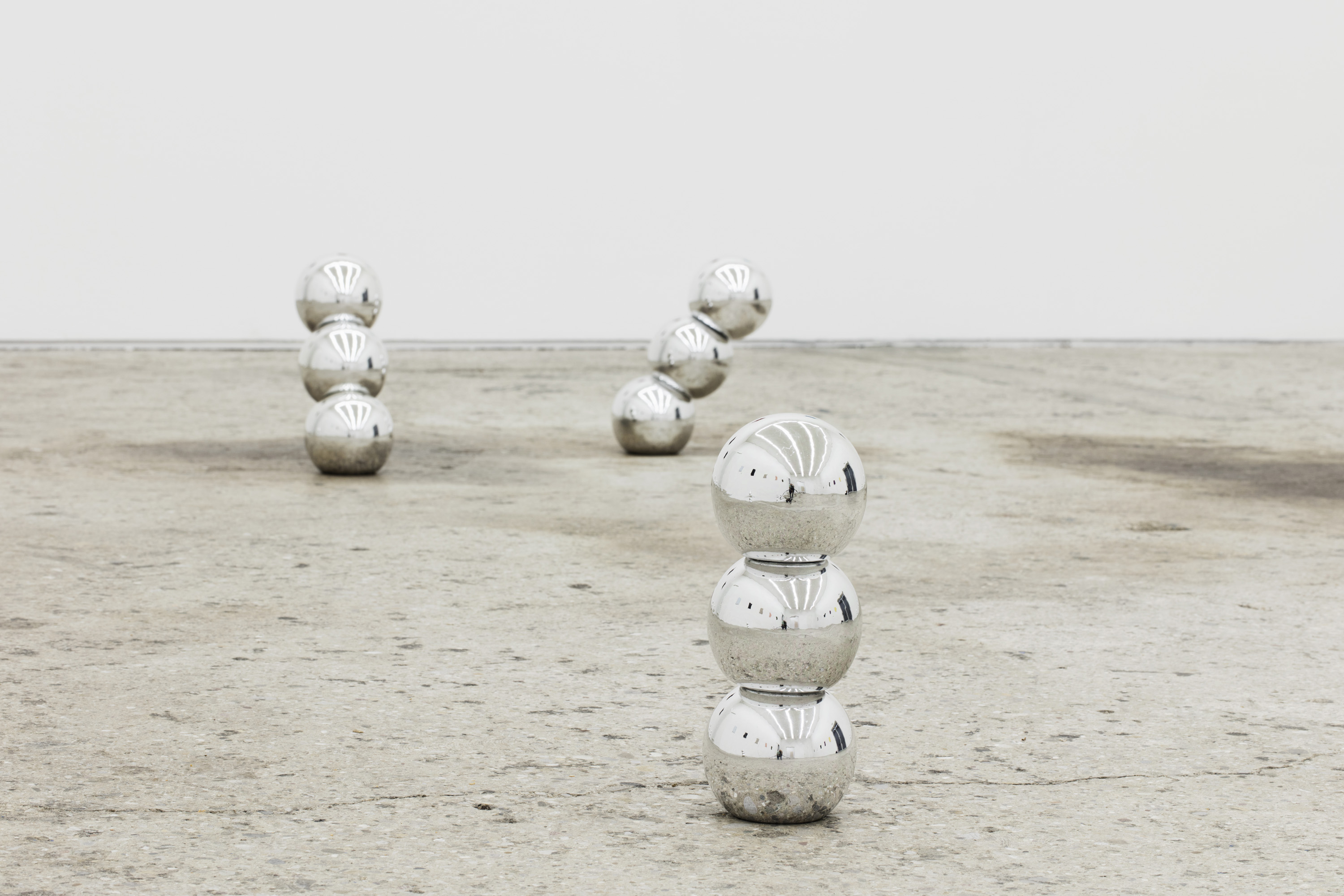
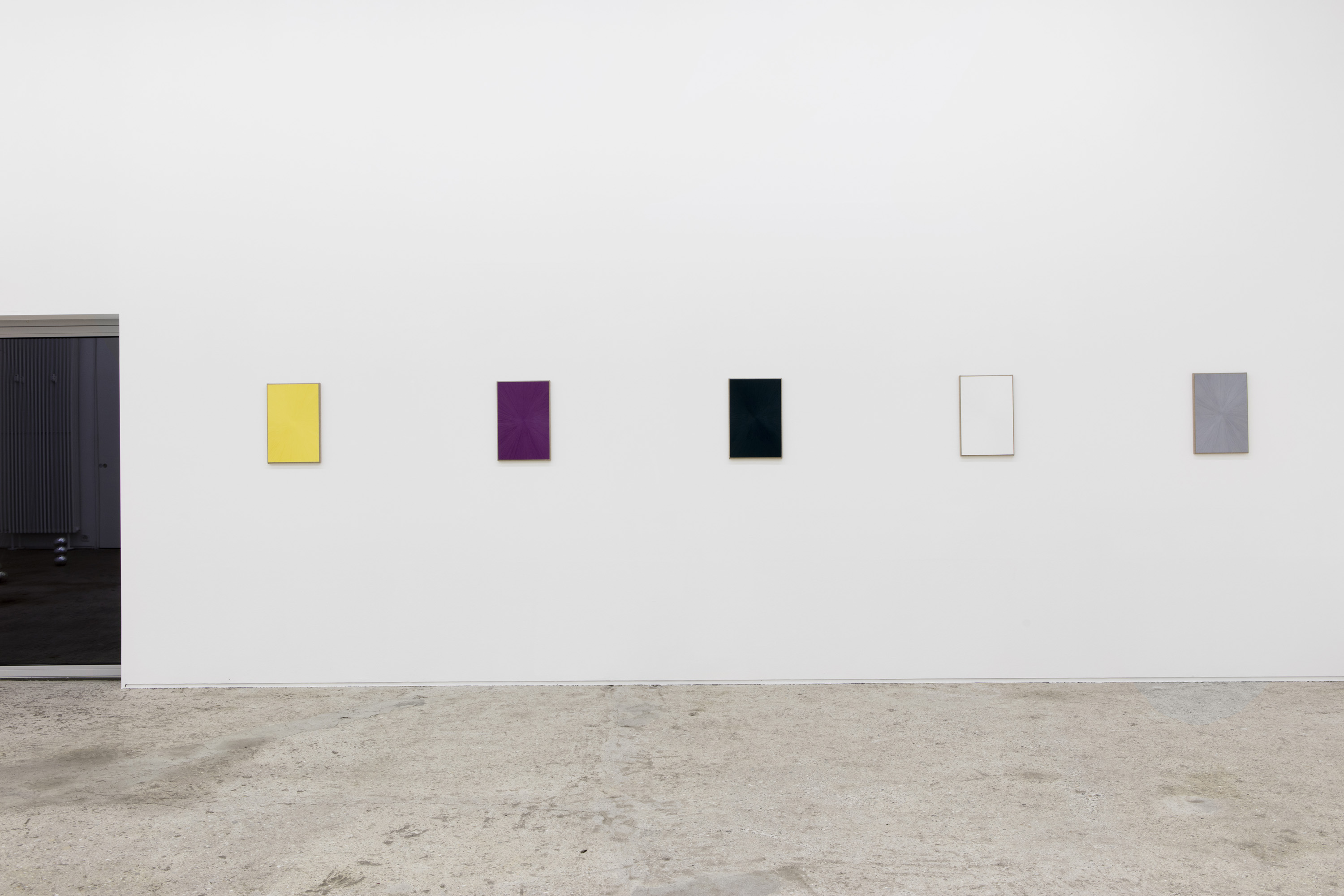
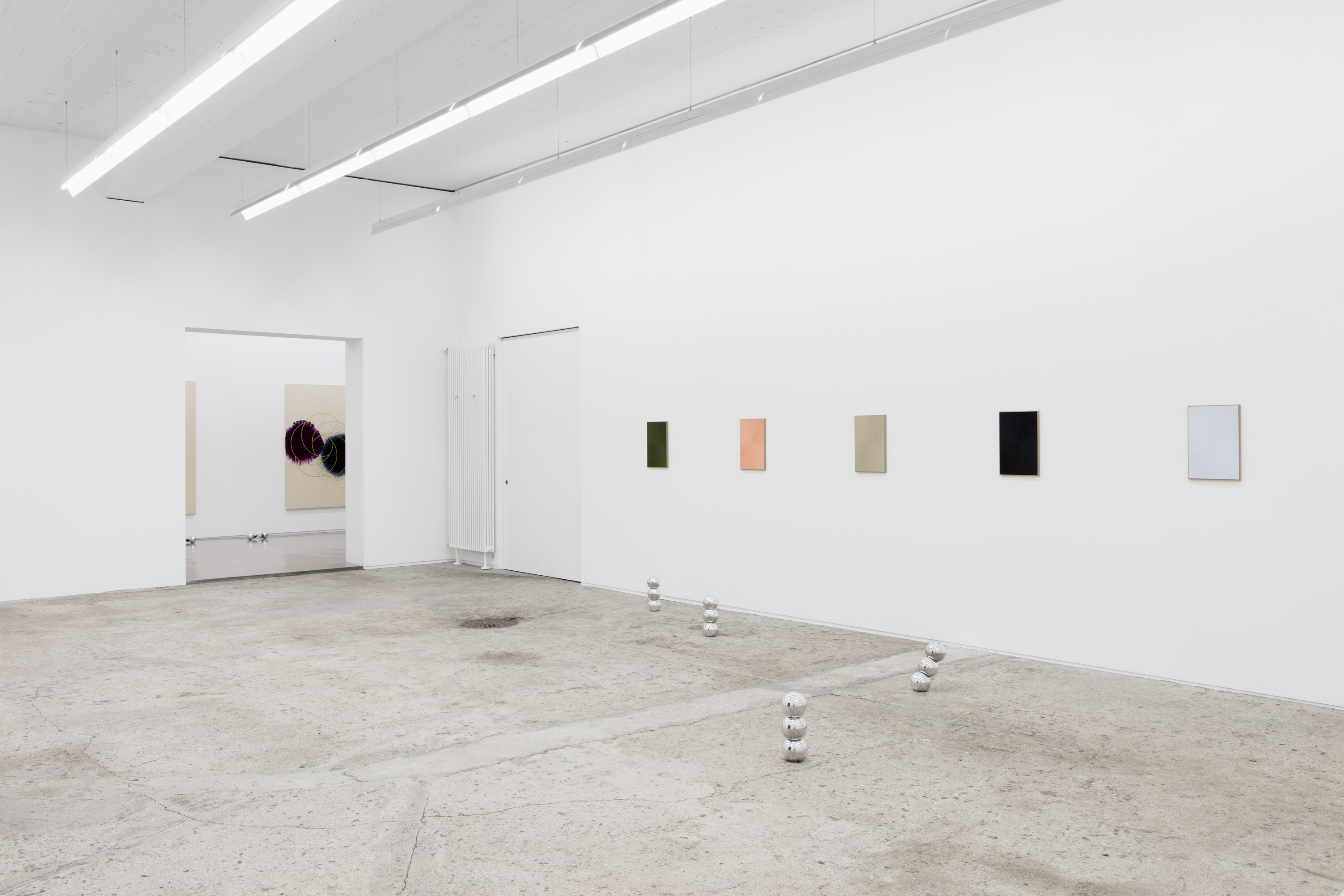


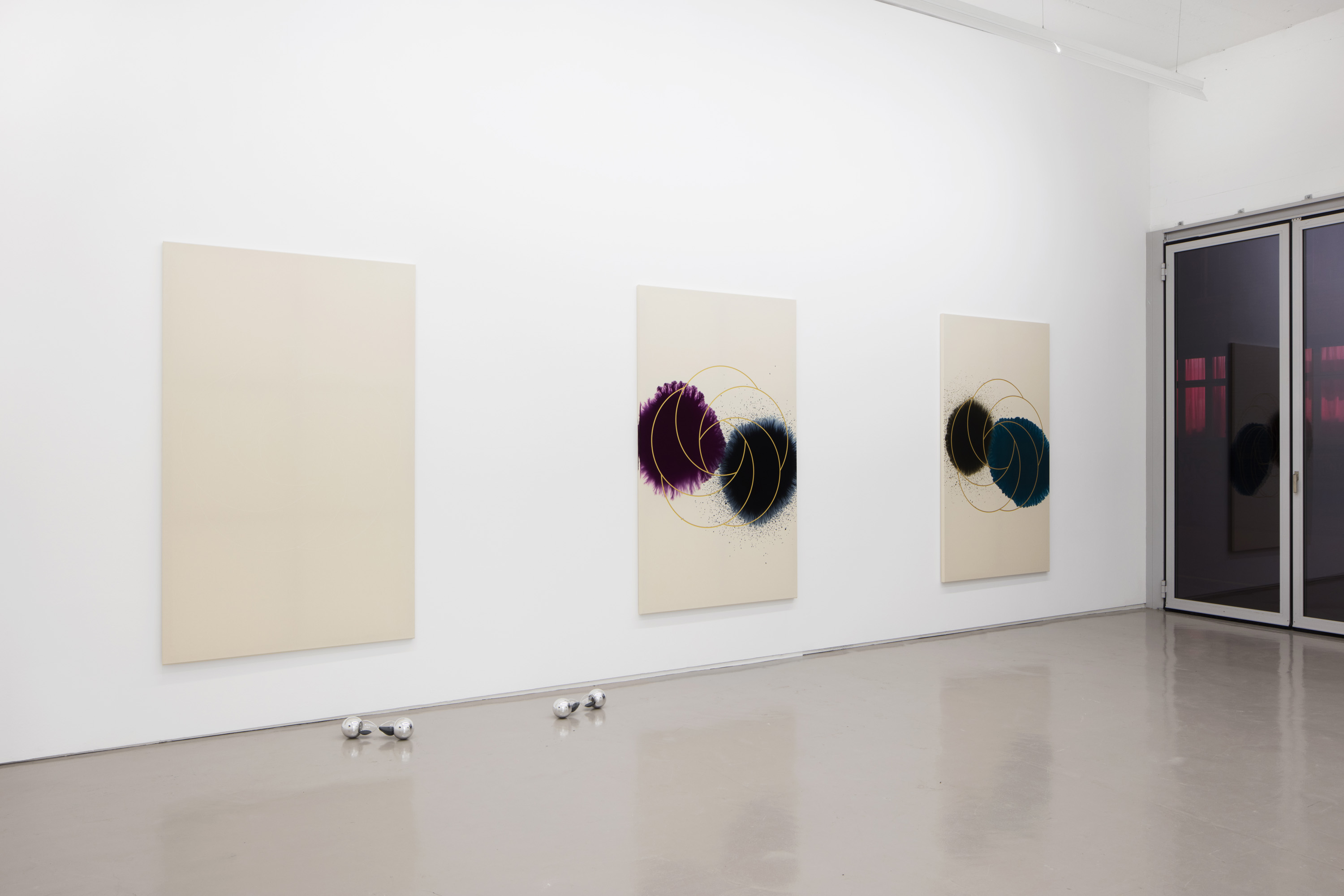
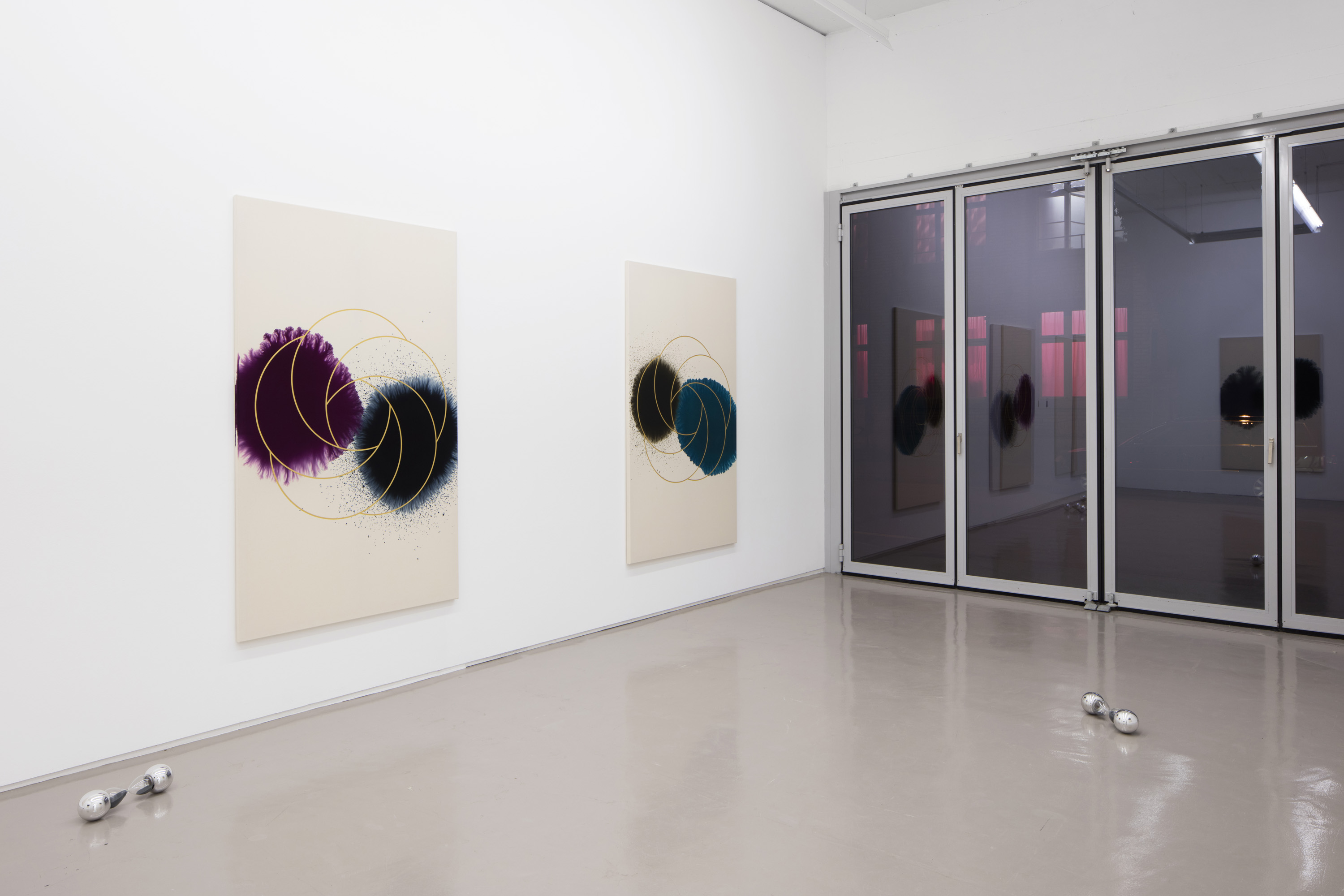
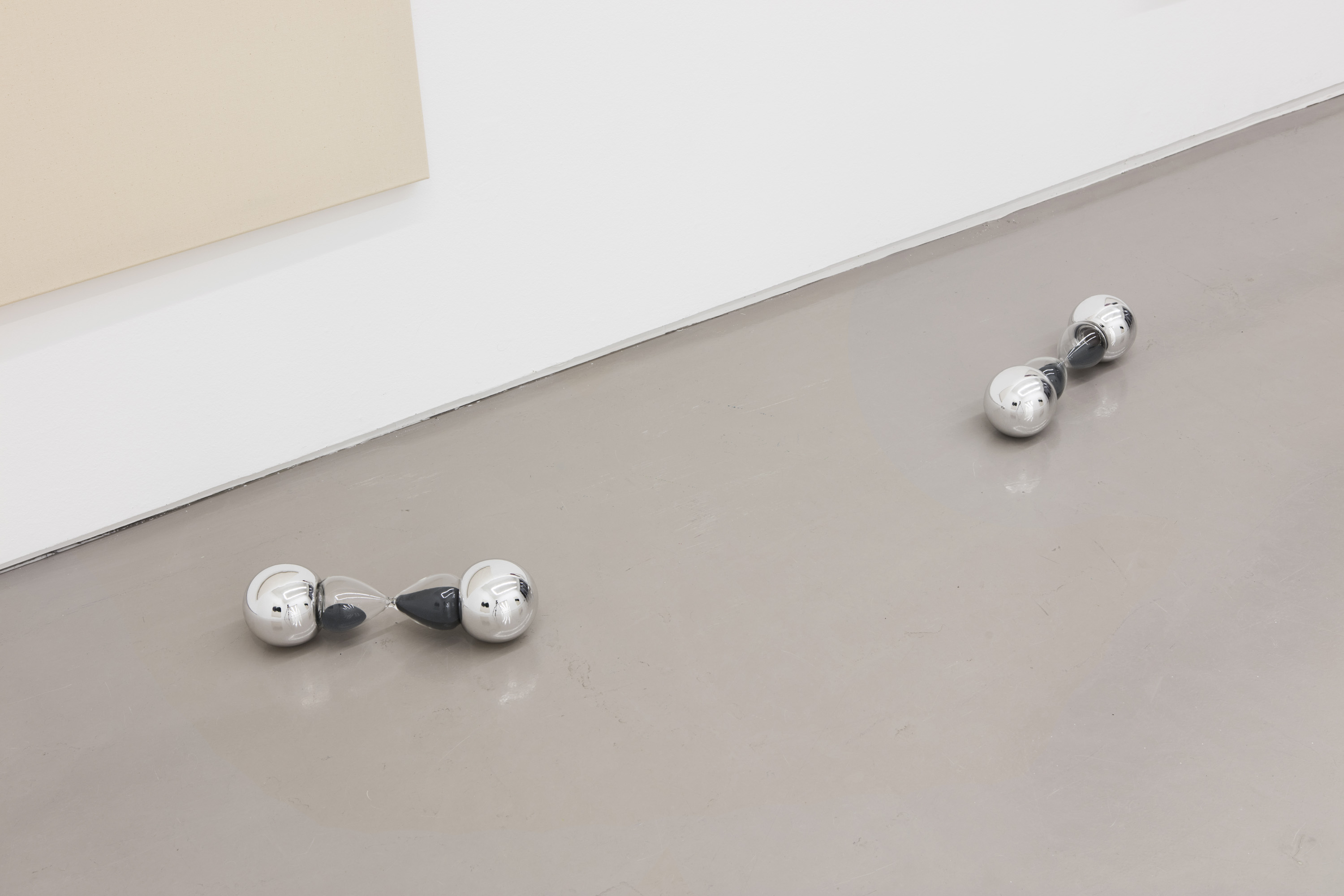

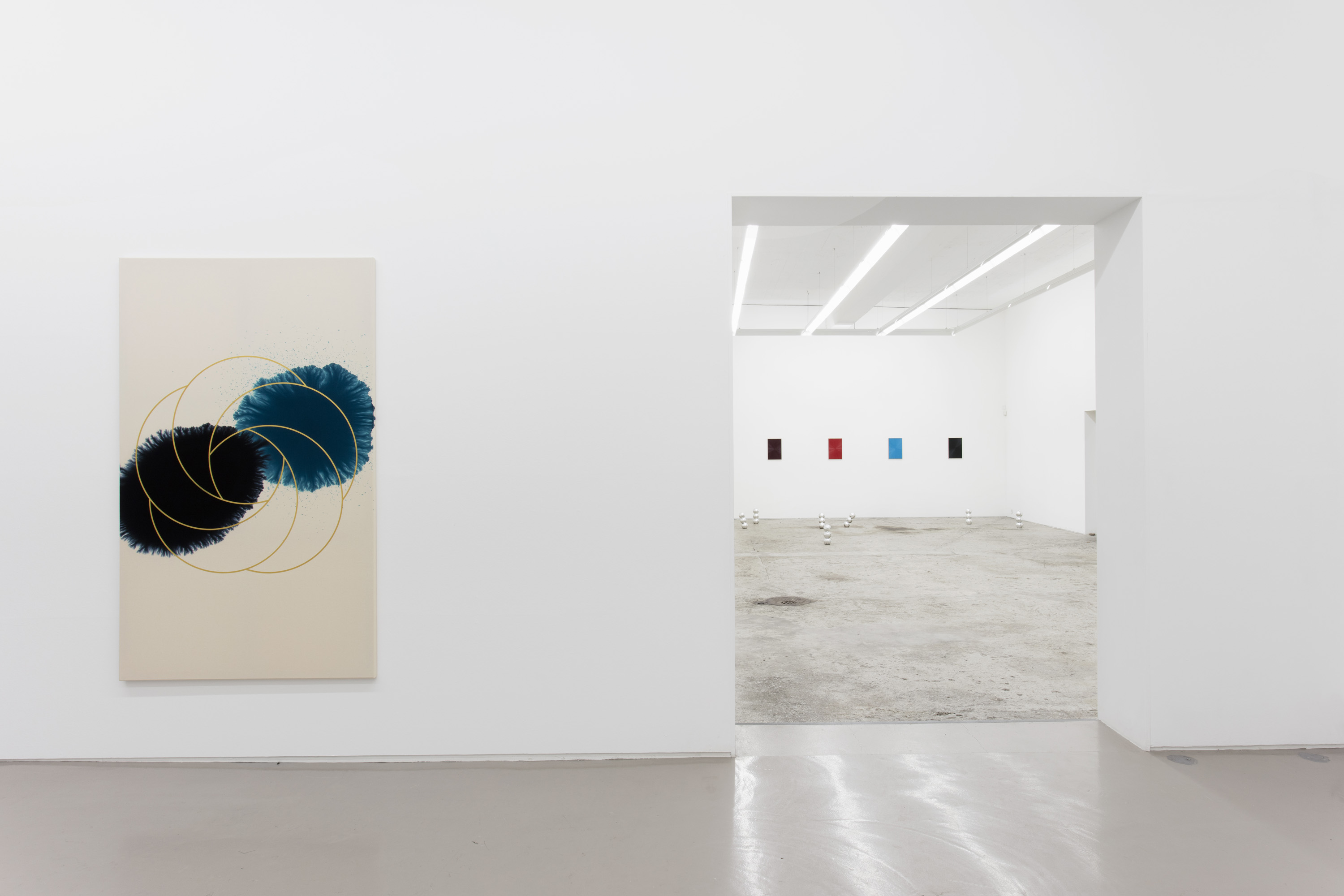
Crimson. Time. Madder. Matter. Naples Yellow. Consciousness. Poetry.
Stimuli of all kinds flood our everyday lives. Thoughts shoot through our minds, feelings overtake our bodies. The only way to escape this state of affairs is meditation, or sometimes in art as well. The works of Giacomo Santiago Rogado place the beholder in a meditative state, take hold of him or her, luring the beholder into a pleasant state of delirium using the means of abstract painting as pioneered by Wassily Kandinsky and Mark Rothko: form, color, spiritual quality. This becomes especially intense when Rogado takes over an entire room, as he did last year at Zurich’s Helmhaus, where he presented a painting 60 meters in length that wrapped around an entire room, enclosing the beholder.
It had neither a beginning nor an end, and the composition itself also moved freely in visual space. He wants to dissolve the topography of the image, as Rogado put it. He previously placed the segments of canvas in a tub filled with water, gradually adding pigments and then allowing the water to evaporate. This resulted in harmonic formations of color that, although frozen, also seem to be in constant motion dictated by water. They evoke associations with aquatic plants, corals, and sea sponges. It is as if Rogado were inviting the beholders to immerse themselves underwater and to become one with this element, with nature, with the cosmos.
In his new exhibition Observing Self Rogado takes this work as his point of departure. He presents three canvases with intense underwater figures, each complemented by a symmetrical, gold-colored symbol that he placed in the middle of the picture. It consists of several intersecting circles and evokes associations with spiritual metaphors like a dharma wheel or a lotus flower, sacred art, but also the iris or the diaphragm of a camera that controls the light passing through the aperture. The beholder observes while at the same time becoming an observer. As the color figures and the circles of the symbol intersect, art and the bolder interpenetrate one another. It is an ideal harmonic state that Rogado places his audience in. As the artist explains, the color gold has always been used to idealize.
Together with Intuition (Vortex), Rogado also presents Introspection, a series of small-format canvases that take up conceptually from color field painting. In each, the artist has applied a color he himself developed, crimson, Naples yellow, sap green, madder, and others. With geometric brushstrokes painted toward the middle of the painting, he has given these
Stimuli of all kinds flood our everyday lives. Thoughts shoot through our minds, feelings overtake our bodies. The only way to escape this state of affairs is meditation, or sometimes in art as well. The works of Giacomo Santiago Rogado place the beholder in a meditative state, take hold of him or her, luring the beholder into a pleasant state of delirium using the means of abstract painting as pioneered by Wassily Kandinsky and Mark Rothko: form, color, spiritual quality. This becomes especially intense when Rogado takes over an entire room, as he did last year at Zurich’s Helmhaus, where he presented a painting 60 meters in length that wrapped around an entire room, enclosing the beholder.
It had neither a beginning nor an end, and the composition itself also moved freely in visual space. He wants to dissolve the topography of the image, as Rogado put it. He previously placed the segments of canvas in a tub filled with water, gradually adding pigments and then allowing the water to evaporate. This resulted in harmonic formations of color that, although frozen, also seem to be in constant motion dictated by water. They evoke associations with aquatic plants, corals, and sea sponges. It is as if Rogado were inviting the beholders to immerse themselves underwater and to become one with this element, with nature, with the cosmos.
In his new exhibition Observing Self Rogado takes this work as his point of departure. He presents three canvases with intense underwater figures, each complemented by a symmetrical, gold-colored symbol that he placed in the middle of the picture. It consists of several intersecting circles and evokes associations with spiritual metaphors like a dharma wheel or a lotus flower, sacred art, but also the iris or the diaphragm of a camera that controls the light passing through the aperture. The beholder observes while at the same time becoming an observer. As the color figures and the circles of the symbol intersect, art and the bolder interpenetrate one another. It is an ideal harmonic state that Rogado places his audience in. As the artist explains, the color gold has always been used to idealize.
Together with Intuition (Vortex), Rogado also presents Introspection, a series of small-format canvases that take up conceptually from color field painting. In each, the artist has applied a color he himself developed, crimson, Naples yellow, sap green, madder, and others. With geometric brushstrokes painted toward the middle of the painting, he has given these
works a pull that can be read as a commentary on the impact of abstract art. Rogado understands them as an analogy to what various spiritual and psychotherapeutic schools describe as the observing self, which he has made the subject of his exhibition.
Alongside the physical self and the mental self, the observing self is able to become conscious of the other two, to do away with fears and insecurities, and transfer them to a harmonic state, becoming one with the surrounding world. This is a little like daydreaming, according to Rogado, one becomes away of consciousness, stepping out of oneself, to observe one’s thought and action from the outside, experiencing that every sound and every sensation has to do with ourselves, stepping outside of time and at the same time becoming aware of it. Rogado creates sensual situations in which the beholder is not to undertake to constant effort to recognize something, thus reassuring himself of his consciousness.
Rogado takes up these considerations in objects that he presents together with the paintings. The observing self figures consist of three mirrored spheres, two of these spheres combined with an hourglass become the Time Capsules. In the arched mirrored surface, the entire space becomes visible, including the beholder. It is the visualization of stepping outside the self and a self-observation. The abstract painting absorbs the beholder, in Rogado’s works, while the arched mirror does exactly the opposite, confronting the beholder with himself and the entire space.
This recalls John Cage’s conceptual work 4’33”, where for four minutes and 33 seconds no sound at all is played by the ensemble, and the audience is forced to listen to itself and the sounds of its environment. The hourglass is an object that stores time, according to Rogado. The time captured in such a capsule only continues if a beholder takes the hourglass in hand. That would stand for the time spent with a certain idea. It is as if the beholder were taking this up and engaging with it to then hand it on to someone else.
Everything is in flux in Rogado’s work. It can thus only to a certain extent be understood in series and cycles; it develops constantly, entering into ever new combinations. In this way, an abstract poetry results with which the artist repeatedly experiments with meter, rhythm, and rhythm, always adding something else. In earlier works, for example, he combined motifs from Intuition and Introspection. With his poetry, Rogado describes emotional phenomena that can better be grasped in form and color than in words.
Sabine Weier
Alongside the physical self and the mental self, the observing self is able to become conscious of the other two, to do away with fears and insecurities, and transfer them to a harmonic state, becoming one with the surrounding world. This is a little like daydreaming, according to Rogado, one becomes away of consciousness, stepping out of oneself, to observe one’s thought and action from the outside, experiencing that every sound and every sensation has to do with ourselves, stepping outside of time and at the same time becoming aware of it. Rogado creates sensual situations in which the beholder is not to undertake to constant effort to recognize something, thus reassuring himself of his consciousness.
Rogado takes up these considerations in objects that he presents together with the paintings. The observing self figures consist of three mirrored spheres, two of these spheres combined with an hourglass become the Time Capsules. In the arched mirrored surface, the entire space becomes visible, including the beholder. It is the visualization of stepping outside the self and a self-observation. The abstract painting absorbs the beholder, in Rogado’s works, while the arched mirror does exactly the opposite, confronting the beholder with himself and the entire space.
This recalls John Cage’s conceptual work 4’33”, where for four minutes and 33 seconds no sound at all is played by the ensemble, and the audience is forced to listen to itself and the sounds of its environment. The hourglass is an object that stores time, according to Rogado. The time captured in such a capsule only continues if a beholder takes the hourglass in hand. That would stand for the time spent with a certain idea. It is as if the beholder were taking this up and engaging with it to then hand it on to someone else.
Everything is in flux in Rogado’s work. It can thus only to a certain extent be understood in series and cycles; it develops constantly, entering into ever new combinations. In this way, an abstract poetry results with which the artist repeatedly experiments with meter, rhythm, and rhythm, always adding something else. In earlier works, for example, he combined motifs from Intuition and Introspection. With his poetry, Rogado describes emotional phenomena that can better be grasped in form and color than in words.
Sabine Weier
2015
Center of mass
Solo show
Bernhard Knaus Fine Art
Bernhard Knaus Fine Art
23/4/15 – 24/6/15
Frankfurt
Frankfurt





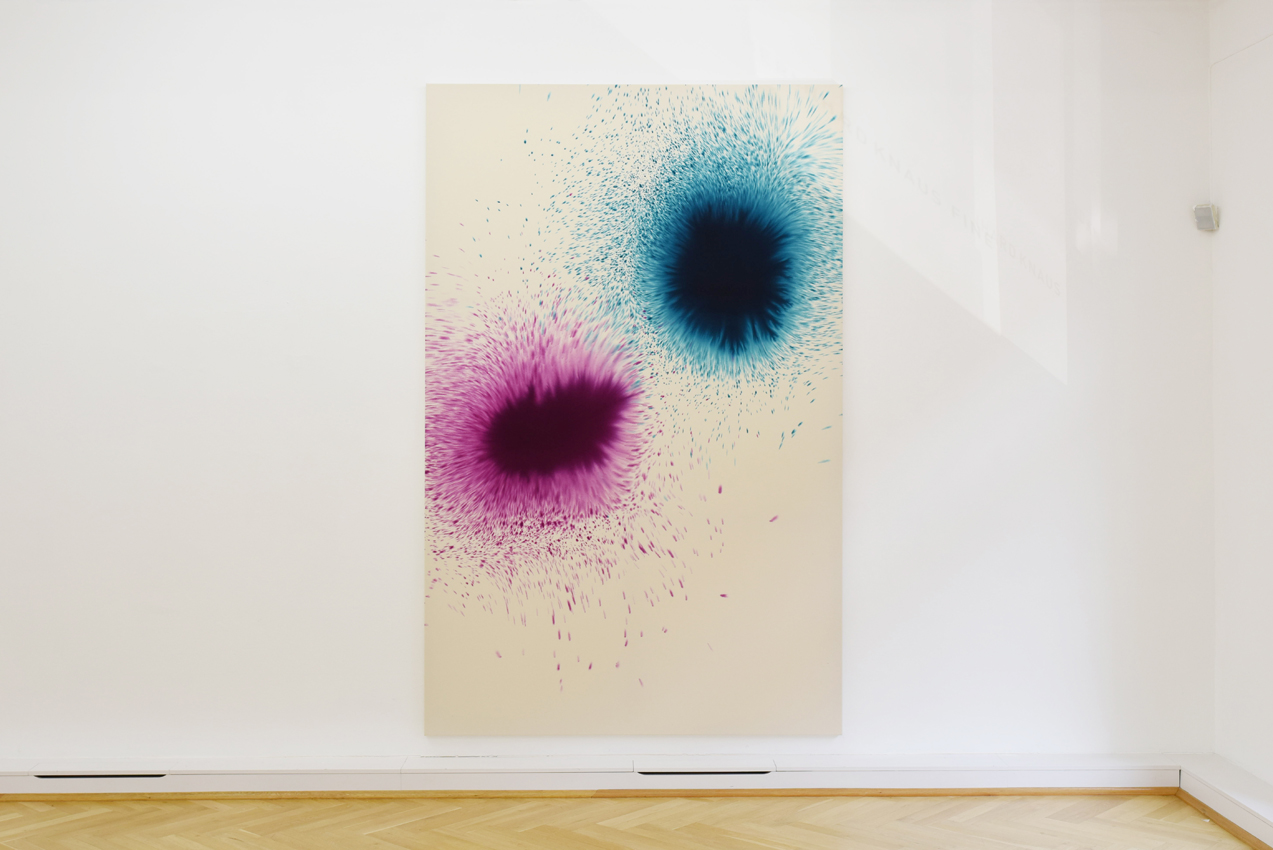
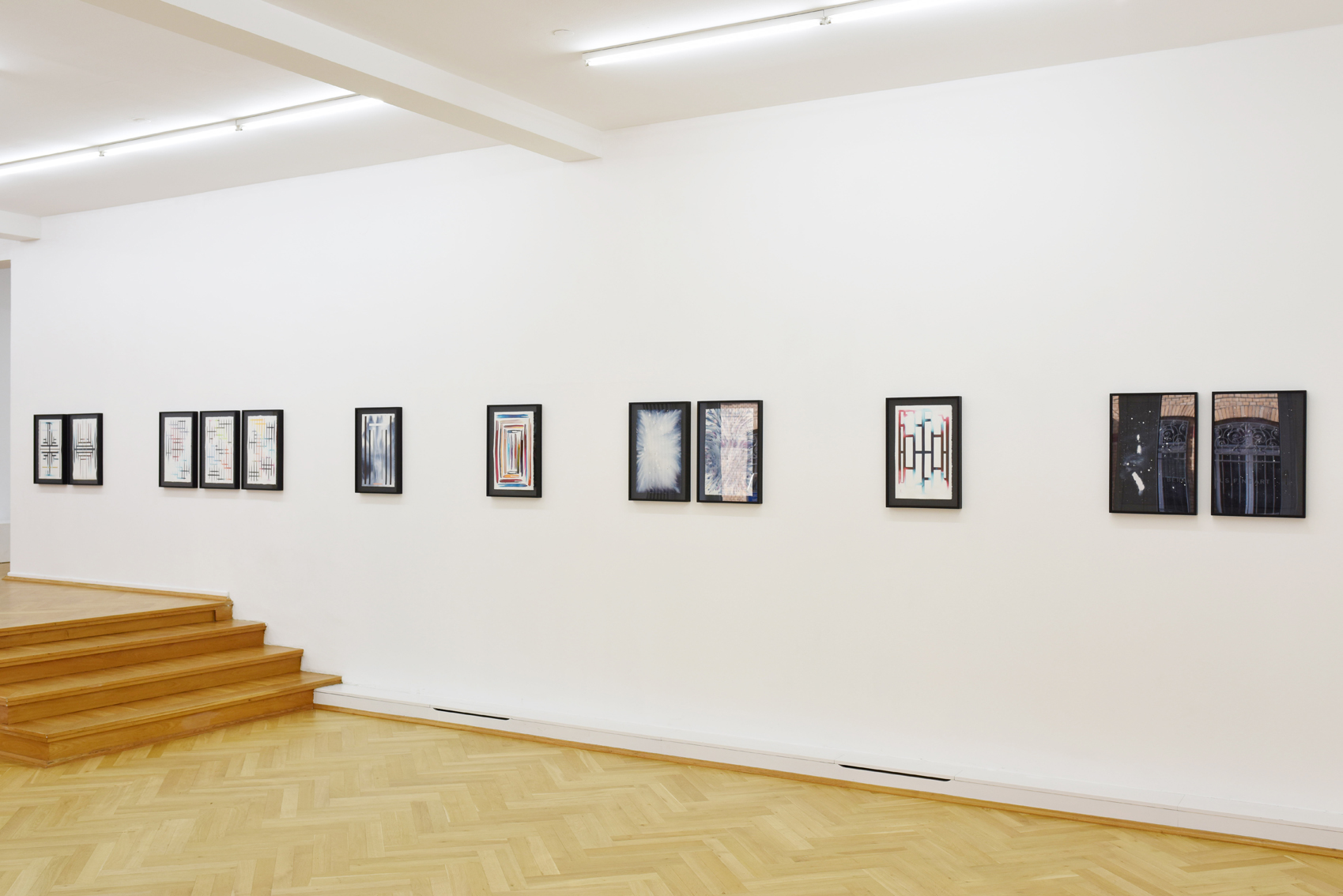


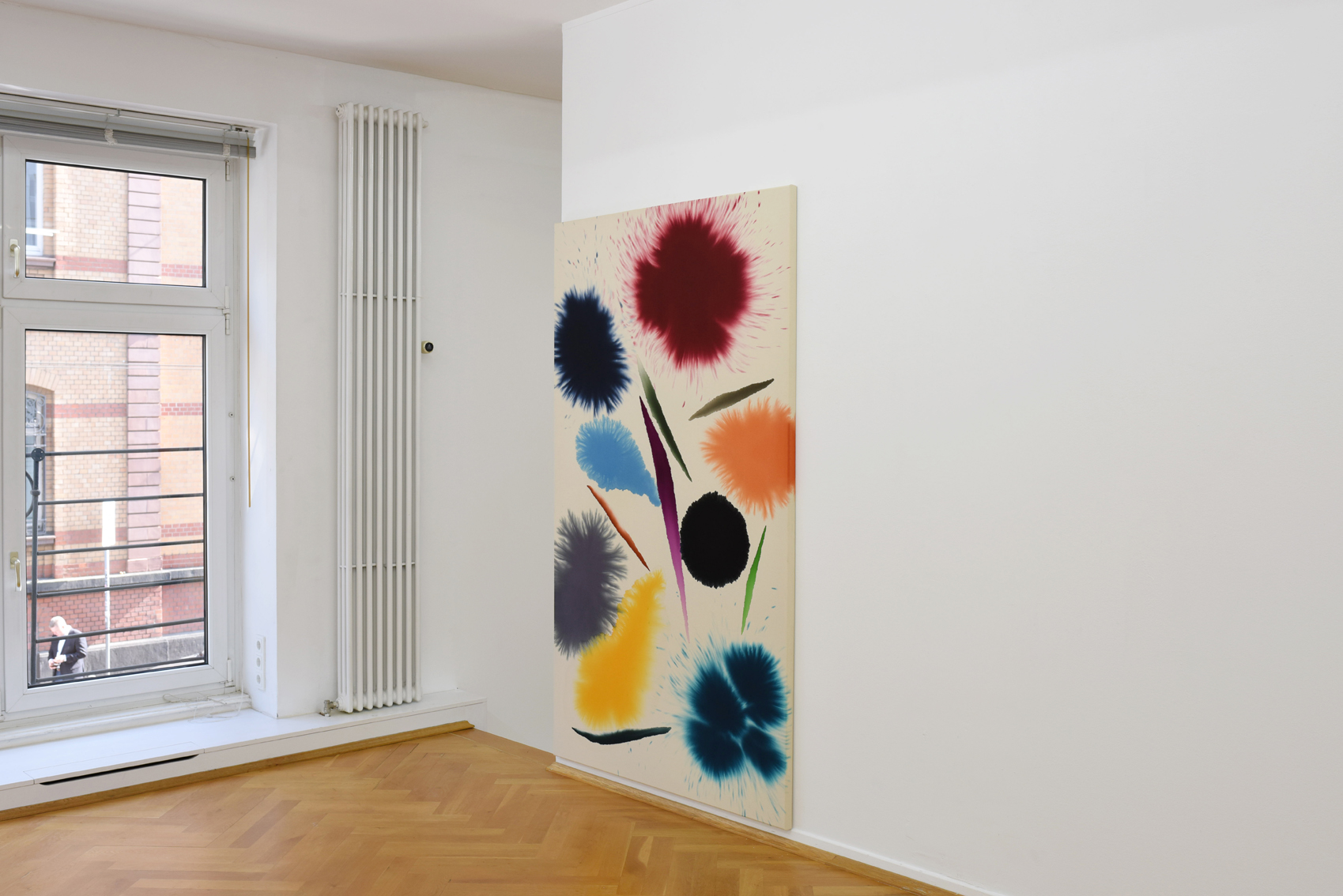
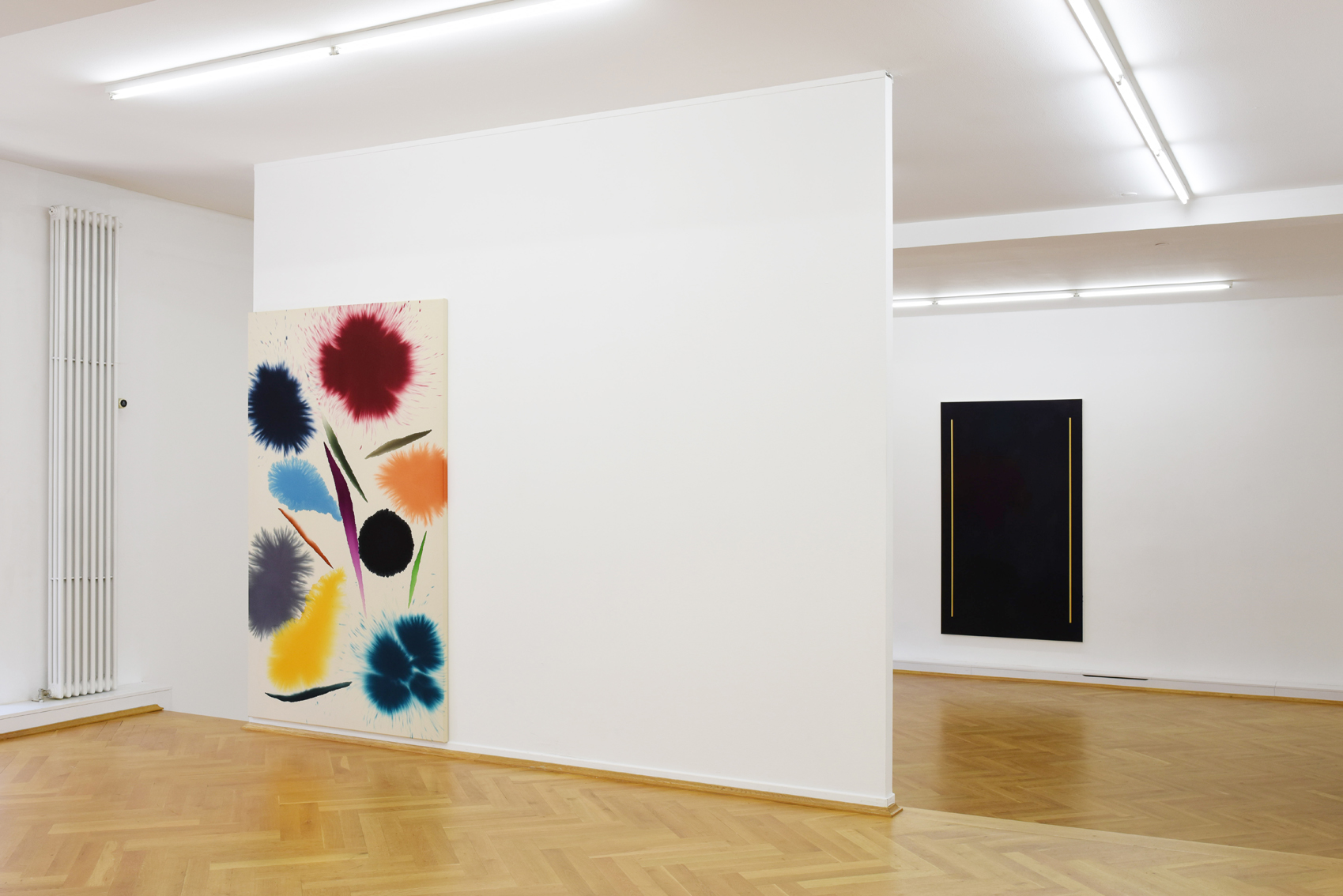
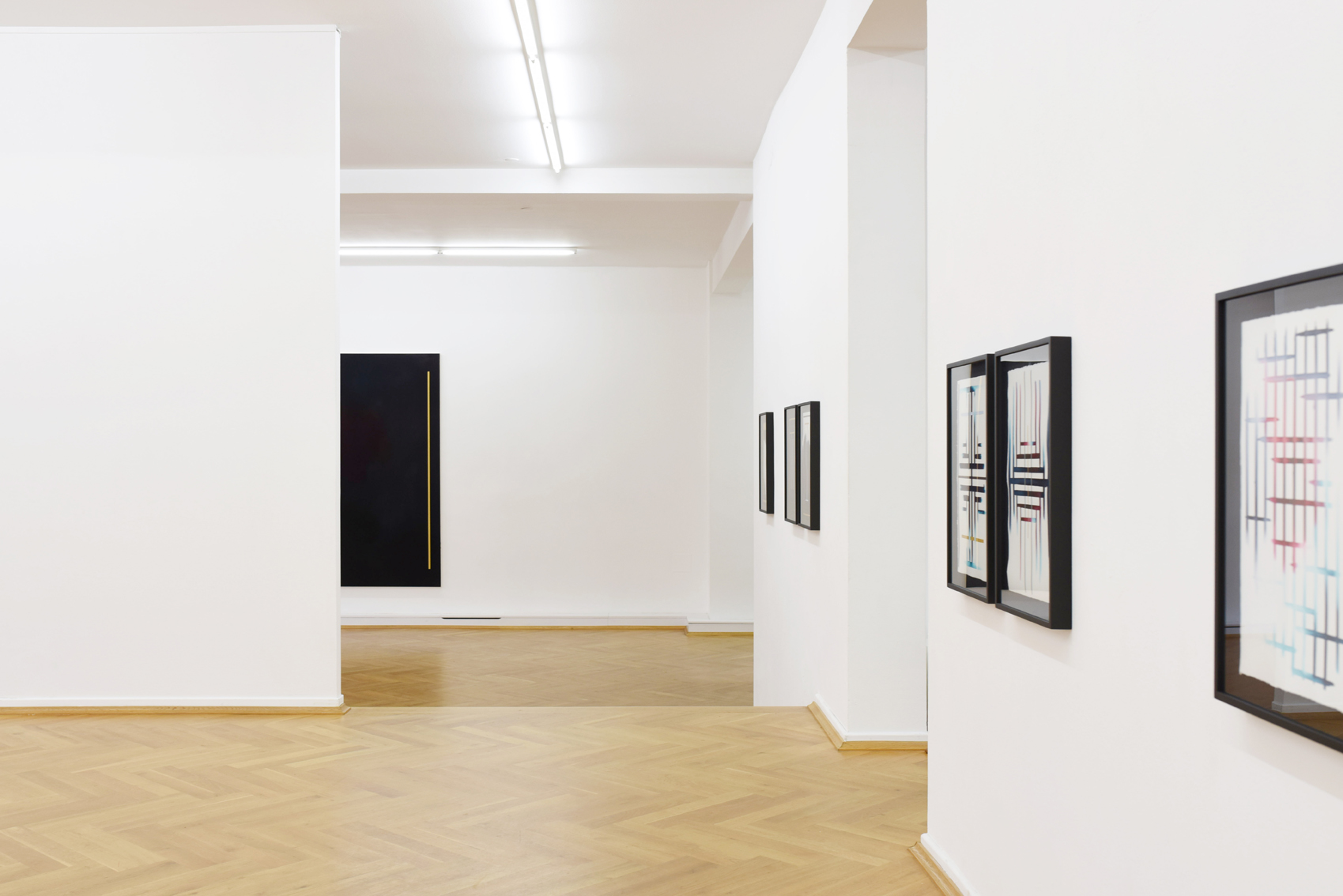
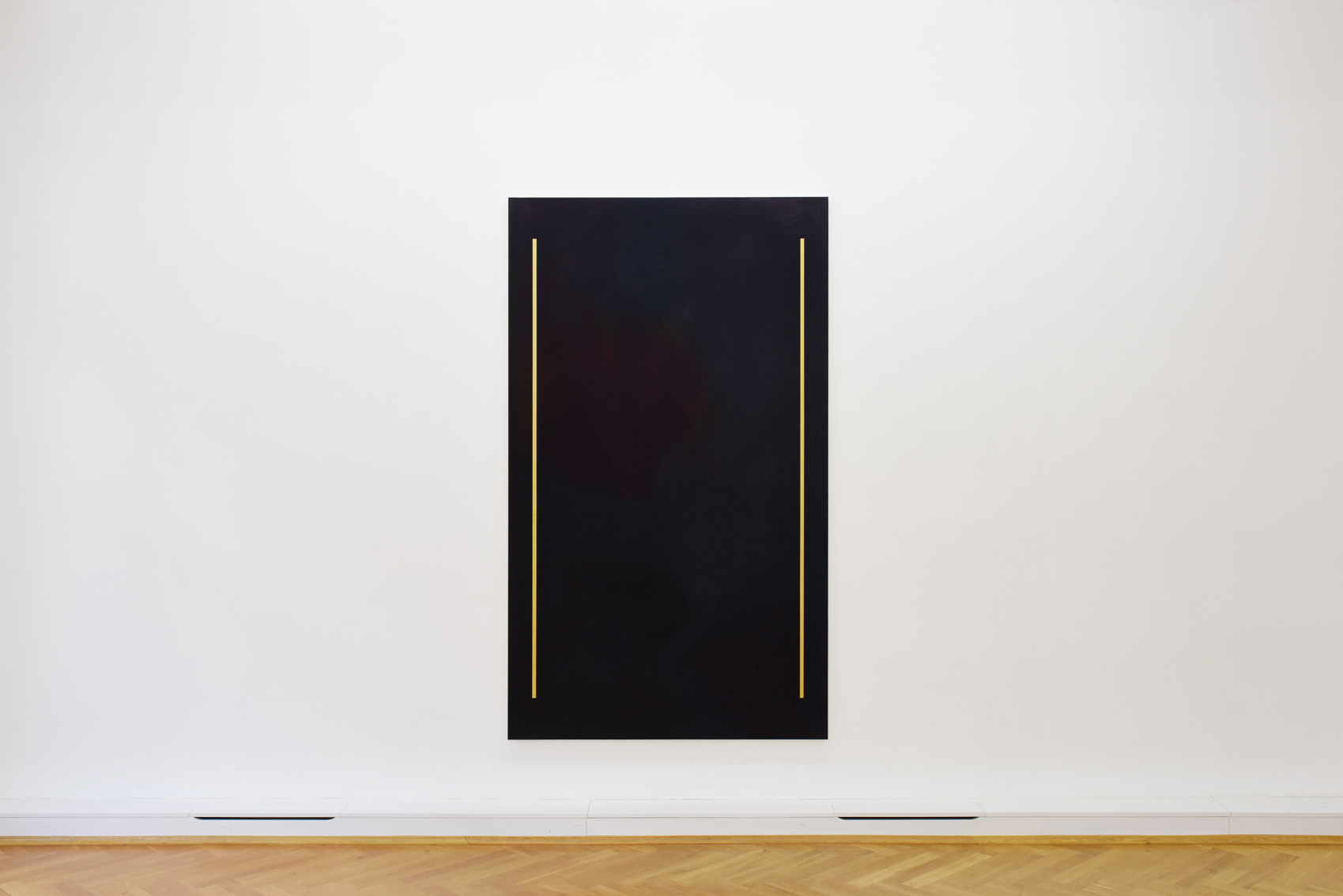
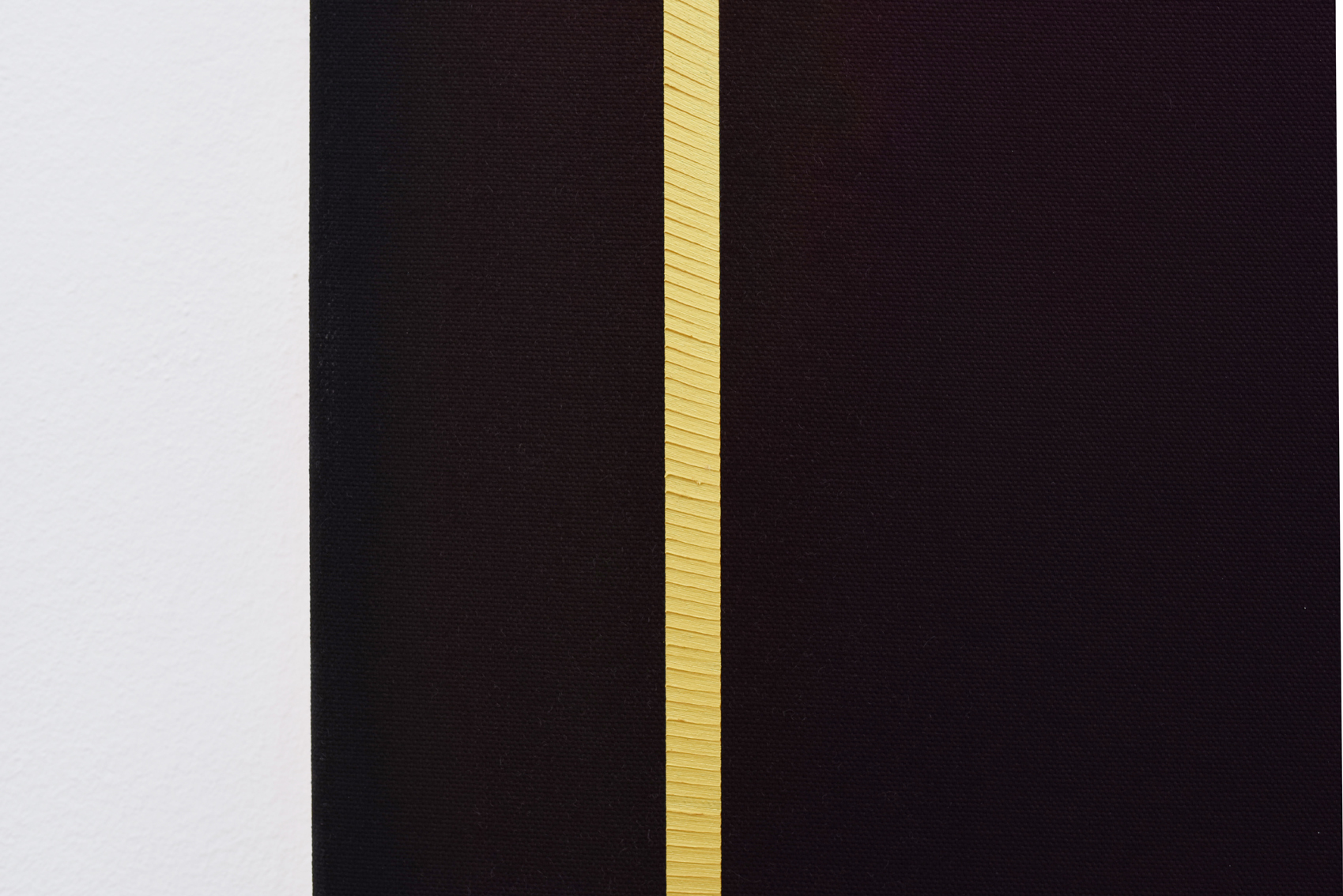
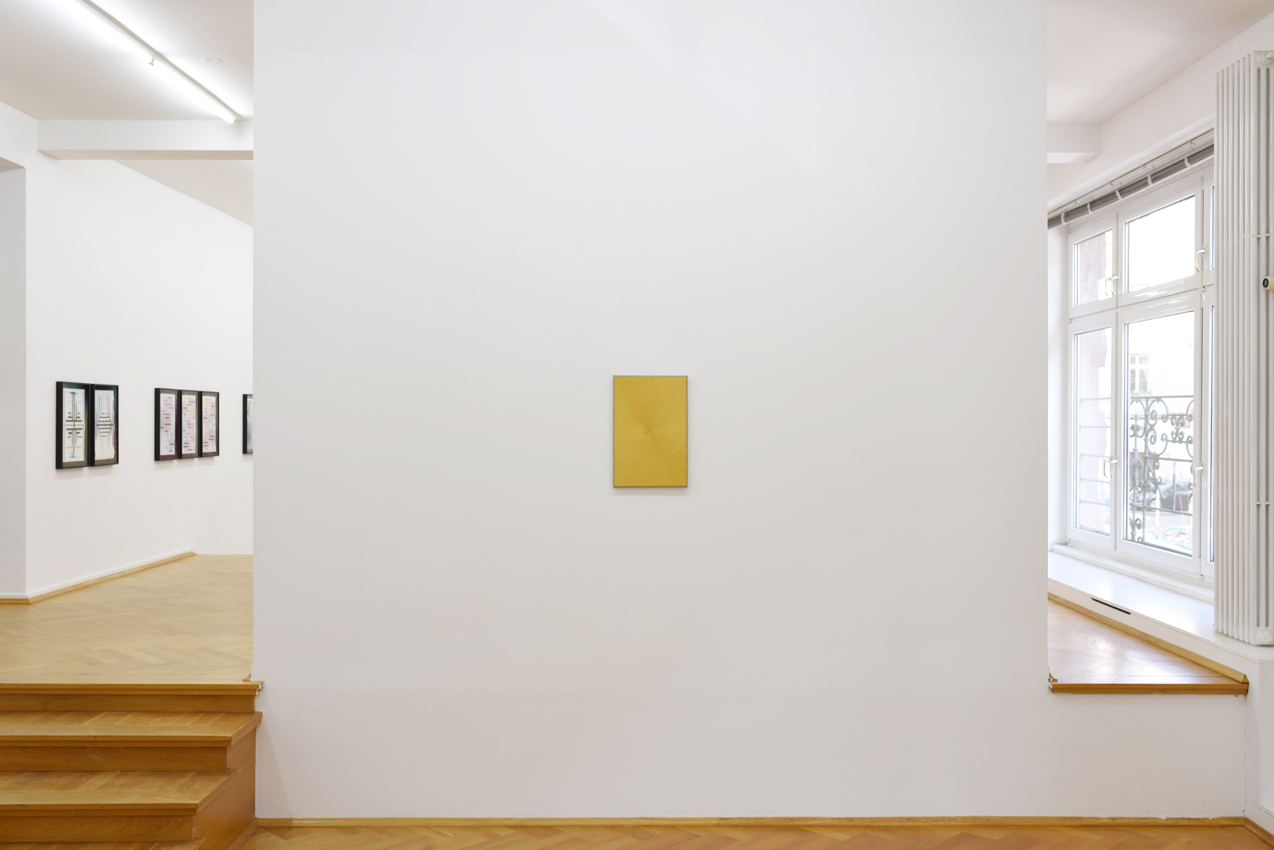
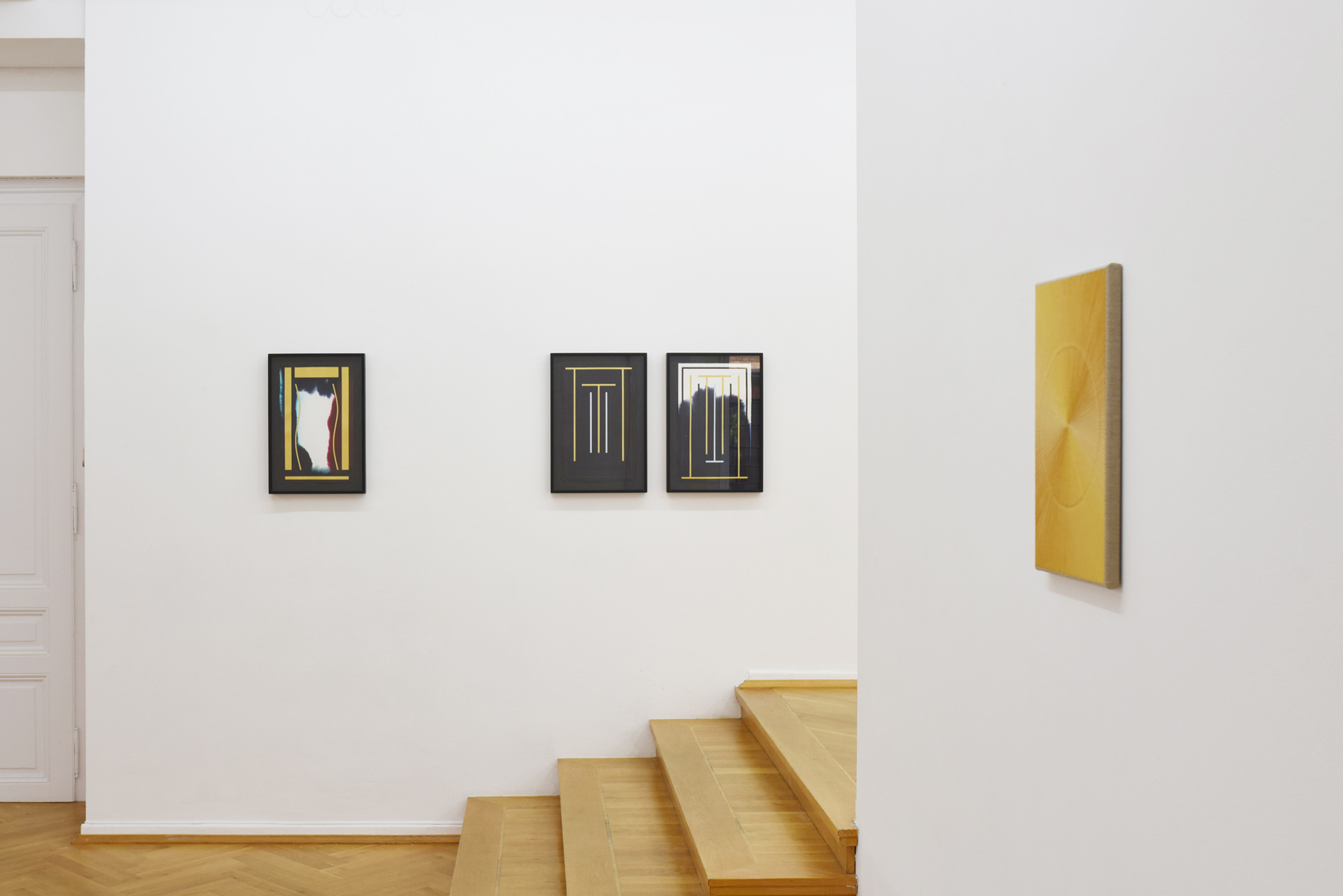
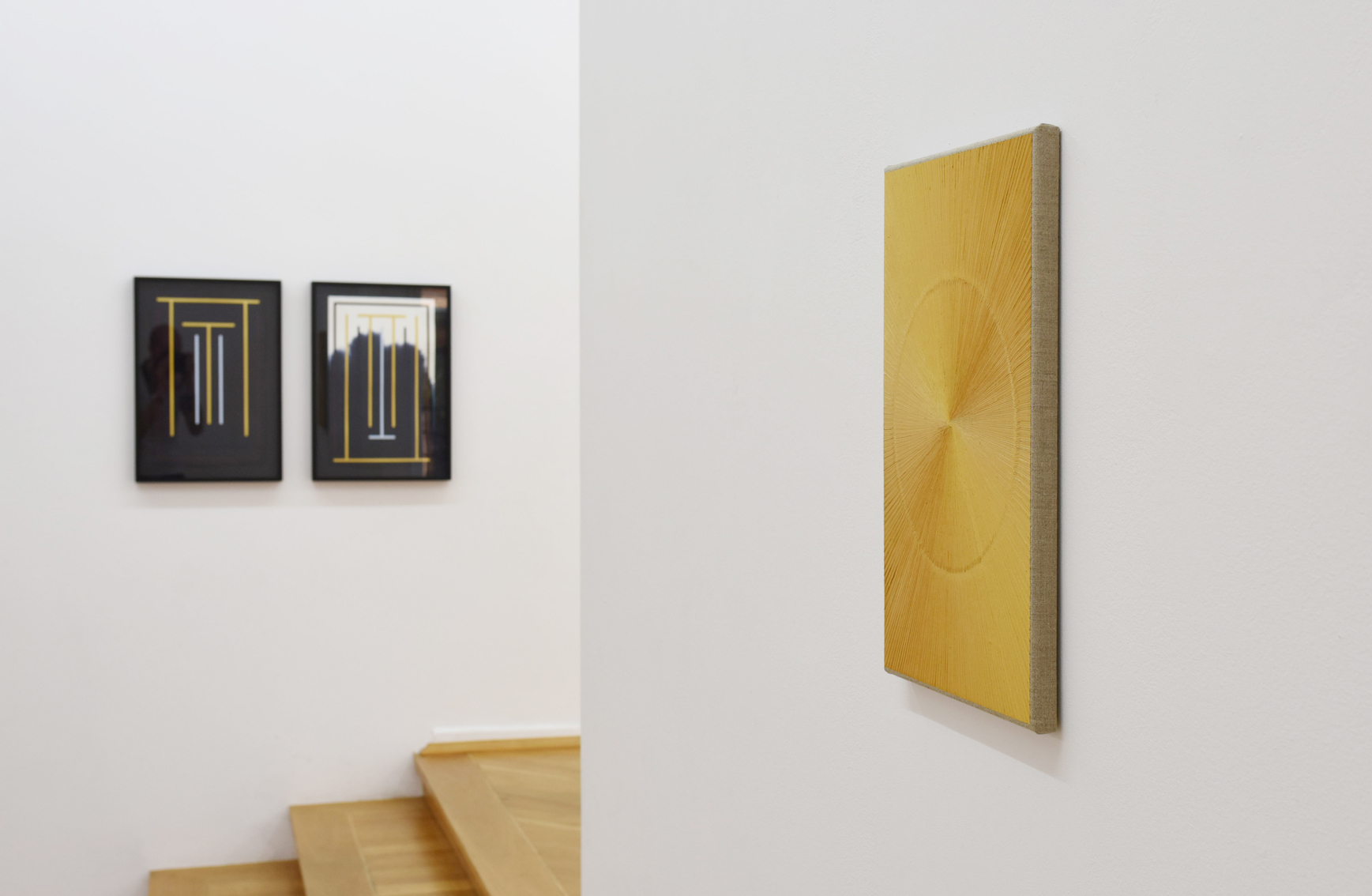
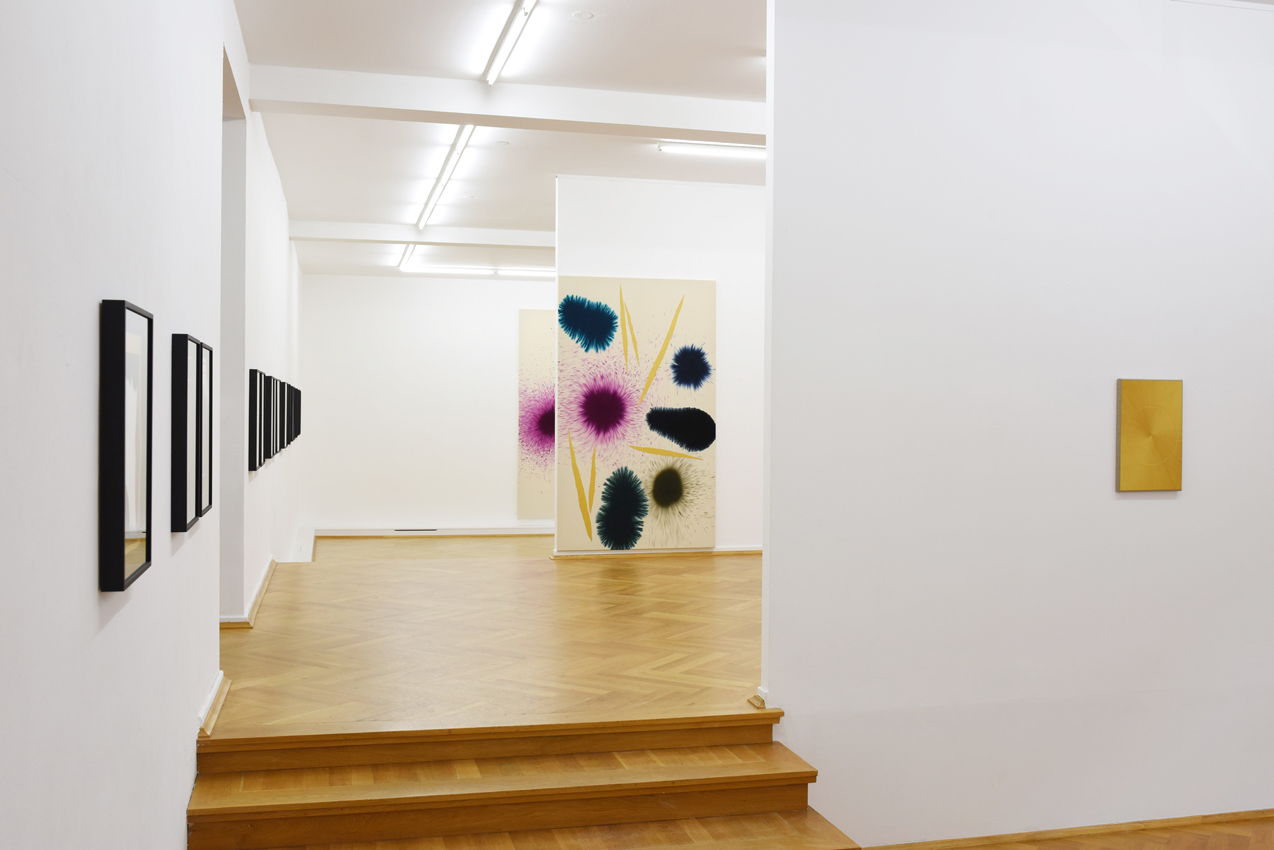
Characteristic of many of Giacomo Santiago Rogado’s pictures are shapes noticeable for the perfection of their lines or for their softly flowing colored structures, be they with fuzzily blurred edges or with sharp outlines. These are expanses of paint that appear to be in motion – a frozen state within a “development process”. Rogado creates the kind of situations in which such processes are triggered in a basin of water into which he has placed the canvas and, using that old, classic dyeing technique, then sprinkled salt and dye. Rogado’s pictures are the products neither of pure chance nor of pure composition. They are produced in a slow, autopoietic process in which all the artist does is to determine the starting point. There are traces of a practical approach to the material of paint. And these are provocative in their naivety.
In his most recent works Rogado contrasts these free shapes with spear-like, clearly defined, hard surfaces. Working at several
In his most recent works Rogado contrasts these free shapes with spear-like, clearly defined, hard surfaces. Working at several
levels at once, he creates an idiosyncratic kind of spatiality. These shapes, often sharply delineated and in many cases rectangular and act as a kind of abstract repoussoir, a foremost level behind which everything else recedes. On closer inspection you can discern painterly structures.
These have occurred through a process of removal. Proceeding radially from the center, the artist uses a brush to pull off some of the expanses of paint he has applied, producing grooves. This means that a garland of rays becomes visible through the interplay of light and shadow alone, such as is the case in “Shine”.
With his subtle interventions Rogado is as persuasive as a magician with his sleight of hand, particularly since his actual “signature” is never visible. Painting as a perfect screen for projection for those viewers interested in modern alchemy who will not be fobbed off by fractals or by explanations of the world using computer simulations and instead look for the quintessence or transmutation? The direct transformation of paint into painting is the artist’s declared objective.
Luigi Kurmann
These have occurred through a process of removal. Proceeding radially from the center, the artist uses a brush to pull off some of the expanses of paint he has applied, producing grooves. This means that a garland of rays becomes visible through the interplay of light and shadow alone, such as is the case in “Shine”.
With his subtle interventions Rogado is as persuasive as a magician with his sleight of hand, particularly since his actual “signature” is never visible. Painting as a perfect screen for projection for those viewers interested in modern alchemy who will not be fobbed off by fractals or by explanations of the world using computer simulations and instead look for the quintessence or transmutation? The direct transformation of paint into painting is the artist’s declared objective.
Luigi Kurmann